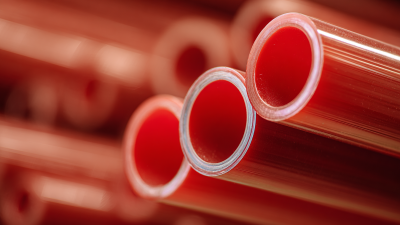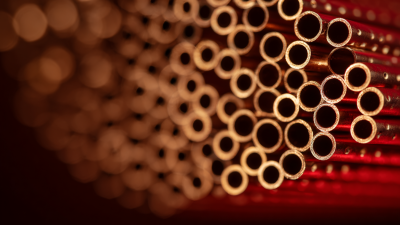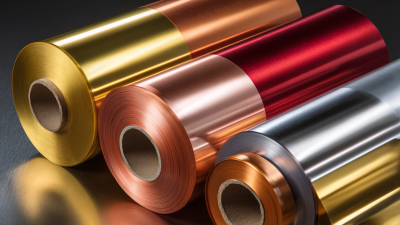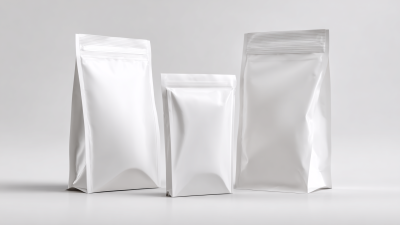Leave Your Message
In the ever-evolving landscape of packaging solutions, the quest for optimal efficiency and sustainability is at the forefront of industry innovation. One noteworthy option gaining traction is the Laminate Pouch, a versatile choice favored by numerous sectors for its ability to combine performance with eco-consciousness. As businesses seek to minimize their environmental footprint while still delivering high-quality products, understanding the various laminate pouch materials becomes crucial. This blog will dive into a comparative analysis of these materials, exploring their benefits, drawbacks, and potential for future advancements. By discerning the characteristics that make certain laminate pouches more effective, we aim to provide insights that can help companies make informed decisions in their packaging strategies. Join us as we embark on this exploration of laminate pouch materials and uncover how they can contribute to a more sustainable future in packaging.

When choosing laminate pouch materials for packaging, understanding their key properties is crucial for enhancing efficiency and sustainability. A well-designed laminate pouch must offer barriers to moisture, oxygen, and light to preserve the freshness of the contents. Each material plays a unique role in this protective function; for instance, polyethylene provides flexibility, while aluminum layers enhance durability and barrier protection.
Tip: Consider the end-use of the packaged product when selecting materials. For products sensitive to moisture and light, prioritize pouches with high barrier properties. Also, look for sustainable options, such as recyclable or biodegradable films, which can minimize environmental impact and appeal to environmentally-conscious consumers.
Another essential property is the sealing capability of the laminate material. A strong seal not only ensures product integrity but also streamlines the packaging process. Materials must be compatible with various sealing techniques, whether heat seal, cold seal, or adhesives. Ensuring that your material choice aligns with the production methods can greatly reduce waste and enhance packaging productivity.
Tip: Test different sealing techniques during the prototype phase to identify the optimal method for your laminate pouch. This experimentation can lead to improved efficiency and help avoid costly production errors.
When evaluating the sustainability of laminate pouch options, it is crucial to consider the environmental impact of various materials. Traditional laminates often incorporate multiple layers of plastics and films, which enhance their barrier properties and shelf life but pose significant recycling challenges. Consequently, many manufacturers are now exploring mono-material laminates that offer comparable protection while being easier to recycle. These innovative materials are designed to minimize waste and lower the carbon footprint associated with production and disposal.
Another aspect to consider is the sourcing of raw materials. Sustainable packaging begins with responsibly sourced materials, such as bioplastics derived from renewable resources. These alternatives not only enhance recyclability but also reduce reliance on fossil fuels. Moreover, advancements in production technology allow for the integration of post-consumer recycled content into laminate pouches, further supporting a circular economy. By evaluating these factors, companies can make informed decisions that align with both environmental goals and consumer expectations for sustainable packaging solutions.

In today's competitive landscape, businesses are increasingly focused on balancing quality and budget when it comes to packaging solutions. The global insulated packaging market, valued at $16.01 billion in 2024, is expected to experience significant growth, reaching $25.95 billion by 2035. This market expansion highlights the necessity for manufacturers to adopt cost-effective yet sustainable packaging options.
When selecting laminate pouch materials, consider these tips: First, evaluate the long-term costs associated with each material, including production, storage, and transportation efficiency. Investing in high-quality, durable materials may incur a higher upfront cost but can lead to reduced wastage and better product preservation in the long run.
Second, analyze the eco-friendliness of materials; opting for sustainable options can not only elevate your brand image but also attract environmentally conscious consumers, which is becoming increasingly vital in today's market. Furthermore, investigate local suppliers to minimize shipping costs and reduce carbon footprint, aligning your packaging strategy with sustainability goals while staying within budget.
By carefully weighing these factors, businesses can navigate the complexities of packaging decisions, enhancing both efficiency and sustainability without compromising their financial constraints.
In the quest for optimal packaging efficiency and sustainability, innovative techniques are increasingly reshaping the landscape of laminate pouches. Studies indicate that more than 80% of packaging failures occur at the seal integrity level, which directly impacts product freshness and shelf life. By implementing advanced sealing technologies, manufacturers can significantly enhance the performance of laminate pouches, ensuring they withstand various logistical challenges while maintaining product quality.

Incorporating bio-based materials into laminate pouches is another remarkable innovation driving sustainability in packaging. According to a report by Smithers Pira, the sustainable packaging market is expected to grow at a CAGR of 5.7% from 2021 to 2026. Utilizing renewable resources not only reduces the carbon footprint but also appeals to environmentally conscious consumers. Moreover, innovative printing technologies, such as digital printing and water-based inks, improve the visual appeal of packaging while staying eco-friendly. By focusing on these innovative techniques, brands can create laminate pouches that are not only efficient but also align with the growing demand for sustainable packaging solutions.
In the realm of modern packaging, laminate pouches have emerged as a versatile solution for a variety of products, ranging from snacks to liquid items. This comparative study delves into the popular laminate pouch materials, highlighting their unique properties and suitable applications. Commonly used materials like PET, PE, and foil laminates each offer distinct advantages depending on the product's requirements. For instance, PET provides excellent barrier properties against moisture and oxygen, making it ideal for packaging sensitive foods. On the other hand, polyethylene (PE) is favored for its flexibility and seal strength, which is essential for products that need to remain airtight.
Furthermore, foil laminates stand out for their superior light and oxygen protection, which is essential for preserving the freshness of products such as coffee and packaged herbs. Understanding the differences between these materials is crucial for manufacturers aiming to enhance packaging efficiency while minimizing environmental impact. As sustainability becomes a priority, there is also a growing interest in biodegradable and recyclable options, prompting brands to reconsider their packaging strategies. The choice of laminate material directly influences not only the product’s shelf life but also its environmental footprint, making this comparative analysis vital for informed decision-making in the packaging industry.
| Material Type | Barrier Properties | Recyclability | Durability | Common Applications |
|---|---|---|---|---|
| PET/PE | Excellent moisture barrier | Partially recyclable | Highly durable | Snacks, pet food |
| BOPP/PE | Good oxygen barrier | Recyclable | Moderately durable | Confectionery, baked goods |
| Metalized PET | Excellent light and oxygen barrier | Not recyclable | Very durable | Coffee, tea, nuts |
| PLA (Polylactic Acid) | Moderate barrier properties | Fully compostable | Less durable | Food packaging, biodegradable applications |
| Aluminum Foil | Excellent barrier | Recyclable | Highly durable | Cheese, soups, sauces |






